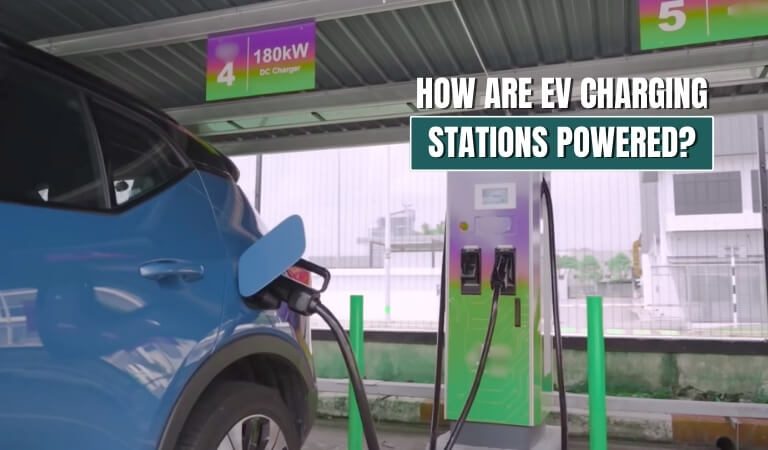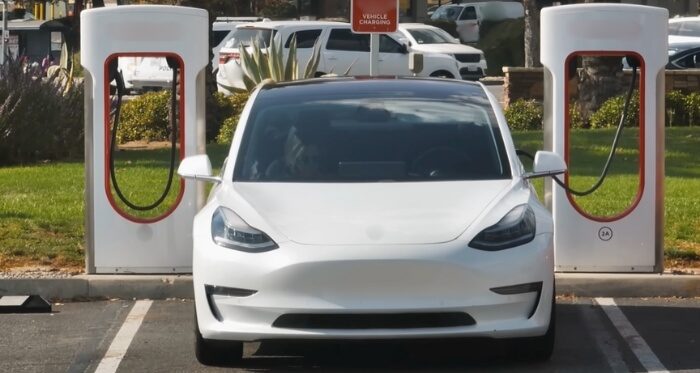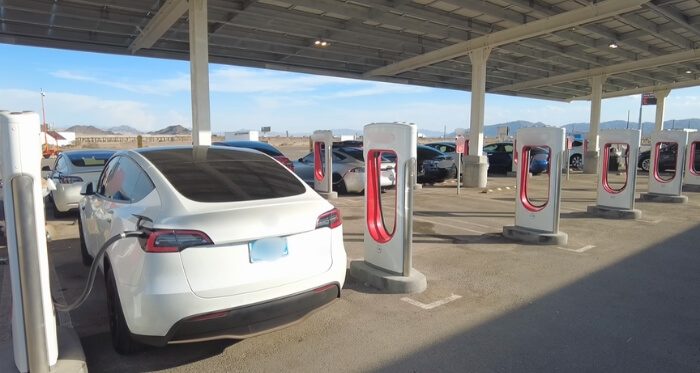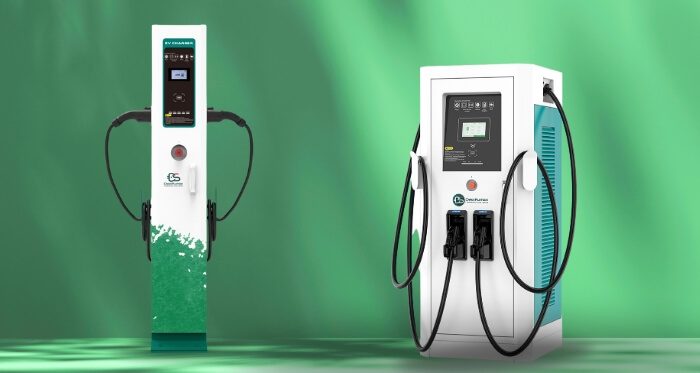A fundamental mechanism for powering Electric Vehicles related to Electric Vehicle (EV) charging stations. For an EV owner, this is an important place to be. There are home EV charging stations and public EV charging stations. Both of them need to connect to electric power to run smoothly. So, the question “How are EV charging stations powered?”, is related to the source of that power.
Most EV charging stations get power from two sources, electric grid or off-grid renewable sources like solar and wind. The energy sources of the Electric grid depend on various entities like coal, oil, natural gas, nuclear, etc based on the grid provider mechanism.
Meanwhile, Crackplatoon CSL is supplying EV charging stations in Bangladesh. Their service is shaping the EV charging experiences for EV users in this region. Their model fulfills all the criteria as the EV charging guidelines provided by the Govt.
Agitated about facts! Join us as we explore the world of EV charging stations and the source of their energy. This will unleash important knowledge and insights about EV charging stations. Let’s start!
What are EV Charging Stations?
EV charging stations are dedicated facilities, designed to refill the batteries that power electric vehicles. These stations have a connection point where EV owners can plug in their vehicles to charge the battery.
There are three types of EV charging stations, including Level 1, Level 2, and DC fast charging stations, each offering different charging speeds. Typically draw electricity from the grid or renewable energy sources to transfer energy into the EV’s battery.
The availability and accessibility of charging stations are essential for the widespread adoption of electric vehicles as they support sustainable transportation and reduce reliance on fossil fuels.
How are EV Charging Stations Powered?
These charging stations need power, and for that, they need to connect with some source of power. Most EV charging stations are powered differently depending on the location and infrastructure. They are refueling points for EVs, offering an eco-friendly alternative to traditional gasoline stations.

Crackplatoon is one of the largest EV charging station suppliers in Bangladesh. Their models are updated with all the criteria, making them an ideal choice for EV charging stations in Bangladesh.
Now, the question “How are EV charging stations powered?” hinges on a variety of options As for the source of power for EV charging stations, can be either from the electric grid or from off-grid sources. Let’s dive into the subject.
Source of Power
These stations are primarily powered by the electrical grid, which may be powered by coal, oil, natural gas or nuclear depending on the grid locations and mechanism. Also, solar and wind energy can provide power to EV charging stations. The integration of these sources is further enhancing their sustainability.
These stations convert alternating current (AC) from the grid into direct current (DC) suitable for vehicle batteries. Here are brief descriptions of the different power sources of EV charging stations.
Grid Electricity
The most common source for powering EV charging stations is Grid electricity. It involves drawing power from the local electrical grid, which predominantly generates electricity from a mix of sources, including coal, natural gas, nuclear, and renewables. While grid electricity is convenient and widely accessible, its environmental impact depends on the grid’s energy mix.
Renewable Energy
Renewable energy sources, such as solar and wind, are increasingly being integrated into EV charging infrastructure. Solar panels installed at charging stations can harness energy from the sun, while wind turbines can generate electricity from wind power. These renewable sources offer a sustainable and low-carbon alternative, reducing the carbon footprint of EV charging.
Hydroelectric Power
Hydroelectric power, generated from flowing water, is another eco-friendly source for EV charging. Hydroelectric plants produce clean electricity and can be integrated into charging station infrastructure, contributing to sustainable mobility solutions.
Nuclear Power
In regions with nuclear power plants, EV charging stations can utilize nuclear-generated electricity. Nuclear power is a low-carbon option, but it comes with concerns about safety and waste management.
These are some of the sources of power for EV charging stations. Depending on the locations and the availability of the sources are selected by the EV charging station installer.
Key Factors of EV Charging Stations
With the growing evolution of these stations, knowing the related factors about these stations is important for EV users and those who are interested in converting to EVs. These are essential components of the EV charging stations. Here are the key factors briefly described.

Charging Station Types
As we mentioned earlier, there are three types of EV charging stations, including Level 1, Level 2, and DC Fast Chargers. Level 1 chargers are standard outlets used for home charging, while Level 2 offers faster charging at public stations. DC Fast Chargers provide the quickest charge, suitable for commercial and highway use.
Infrastructure and Installation
Setting up an EV charging station involves significant infrastructure work and coordination with local utilities. This process includes site assessment, installation of electrical systems, and ensuring compliance with safety standards. An EV charger supplier plays a pivotal role in providing the necessary equipment and technical expertise.
Smart Charging and Technology
Modern EV charging stations incorporate smart technology for efficient energy management. These systems can adjust charging rates based on grid demand, vehicle needs, and user preferences. Such advancements ensure optimal charging speeds and enhance the overall user experience.
Environmental Impact and Sustainability
EV charging stations contribute significantly to reducing carbon emissions and dependence on fossil fuels. By utilizing renewable energy sources and smart grid technology, these stations offer a sustainable charging solution. Their growth is pivotal for achieving global environmental goals.
EV charging stations are sophisticated systems that blend technology and sustainability. They represent a crucial component in the transition towards a greener future, powered by innovative solutions and a commitment to environmental preservation.
Are There Any Remote Power Sources for EV Charging?
Yes, there are remote power sources for EV charging. Remote power sources allow EV charging in areas where access to the conventional electrical grid is limited or unavailable.

These solutions are crucial for expanding the reach of EV charging infrastructure. Let’s dive into the factors involved in remote power sources for EV charging under distinct key points.
Solar-Powered Charging Stations
Some of the charging stations utilize solar panels to harness energy from the sun, these are referred to as Solar-power EV charging stations. These stations are self-sustaining, making them ideal for remote locations with abundant sunlight. Their effectiveness depends on the solar panel capacity, weather conditions, and battery storage.
Wind-Powered Charging Stations
Another remote power source for EV charging stations is Wind-powered or wind turbines. These stations rely on wind energy to generate electricity, making them suitable for windy regions. Their performance depends on the wind speed, turbine efficiency, and energy storage capacity.
Generator-Powered Charging
In areas without reliable grid access, generator-powered EV charging stations can be deployed. These stations use generators, often running on diesel or other fuels, to supply electricity. These stations rely on fuel availability, generator maintenance, and fuel efficiency for smooth operation.
Battery-Powered Mobile Chargers
The most versatile solution for remote EV charging is battery-powered mobile chargers. These units contain onboard batteries that can be charged in advance and transported to remote locations. Their operation depends on the battery capacity, charging speed, and ease of transportation.
Remote power sources for EV charging play a crucial role in expanding the accessibility of EV infrastructure to remote and off-grid locations. The choice of remote power source depends on factors like resource availability, environmental conditions, and the specific needs of the location.
Crackplatoon: The EV Charging Station Solution In Bangladesh
CrackPlatoon Charging Solution Limited is a pioneering leader in the field of EV charging solutions and services in Bangladesh. They are dedicated to revolutionizing the landscape of electric mobility by establishing EV charging stations across the country.

With their proprietary cloud-based software, the CrackPlatoon Charging Network System, they ensure the smooth operation and maintenance of their charging stations, offering property owners and managers the tools for remote monitoring and management.
For EV drivers, CrackPlatoon provides real-time station information, creating a superior charging experience. They also collaborate with Property Partners through diverse deployment models, fostering widespread adoption of their EV charging solutions.
EVSE Networking
CrackPlatoon EV Charging has an OCPP (Open Charge Point Protocol) network is an independently developed platform that seamlessly integrates with EV charging stations in real time.
This platform offers a unified API interface environment, simplifying the customization of various application functions and resources, including permission management, remote start-stop, and OTA upgrades.
It enables remote control of EV charging stations in Bangladesh, ensuring efficient and user-friendly charging experiences. OCPP, as an open-source communication protocol, standardizes the interaction between charging stations and central management systems. It facilitates authorization, billing, and real-time monitoring, optimizing the entire charging process and enhancing convenience for EV drivers.
EVSE Products
CrackPlatoon offers a range of EVSE (Electric Vehicle Supply Equipment) products designed to meet various charging needs. Their lineup includes the RUMI71-DC for fast DC charging with double outlets, suitable for commercial squares and charging stations.
The MIHIR52-AC is a versatile AC EV charging pile supporting multiple power levels and connector types, ideal for various scenarios. For home users, the AMITI21-AC provides a simple and lightweight solution with wall box and floor stand options.
Also, the ALAK48-AC serves commercial purposes and can be easily installed in either wall box or floor-stand configurations. All products prioritize user-friendly design and IP54-rated protection, ensuring durability in various environments.
Final Thought
So, the power of an EV charging station can vary depending on the service providers of the electric grid. While finding the answer to the question ‘How are EV charging stations powered?’, we have outlined these various sources. From electric grid to off-grid solar and wind all can be the source of EV charging stations.
As the electric grid is powered by coal, oil, natural gas, or nuclear, hence we can say the source of the EV charging station’s power is these energy sources. They can also be powered remotely through various sources. Energy sources like solar, wind, battery, and generator can power up EV charging stations.
Also, we highlighted the CrackPlatoon EV charging, which is a leading EV charging station supplier in Bangladesh. Their OCPP is an independent network created to integrate EV charging stations in real-time. Also, they have four different EV charging models for the users in this region.
Therefore, knowing the power source of the EV charging stations may provide information about the working mechanism of these charging stations. It’s really useful to be aware of how these stations are powered. Hope you enjoy our exploration. Happy EV Journey!
